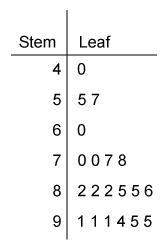Quadrilateral ABCD has the following vertices:
• A(-3,0)
B(7,2)
C(1,-4)
D(-9,-6)<...

Mathematics, 28.10.2020 21:20 greg777
Quadrilateral ABCD has the following vertices:
• A(-3,0)
B(7,2)
C(1,-4)
D(-9,-6)
.
.
.
Is quadrilateral ABCD a parallelogram, and why?
Choose 1
A
Yes, because AB | CD, and BC I AB.
B
Yes, because AB | CD, and BC || AD.
No, because AB is longer than CD.
No, because BC is not parallel to AD.

Answers: 2


Another question on Mathematics

Mathematics, 21.06.2019 16:00
Which segments are congruent? o jn and ln o jn and nm o in and nk onk and nm
Answers: 3

Mathematics, 21.06.2019 16:00
You paint a 1/2 of a wall in 1/4 hour. how long will it take you to paint one wall
Answers: 2

Mathematics, 21.06.2019 18:10
Find the smallest number by which the given number should be divided to make a perfect cube(with steps or the answer will get reported) a.108 b.2187
Answers: 1

Mathematics, 21.06.2019 23:20
Triangle xyz, with vertices x(-2, 0), y(-2, -1), and z(-5, -2), undergoes a transformation to form triangle x? y? z? , with vertices x? (4, -2), y? (4, -3), and z? (1, -4). the type of transformation that triangle xyz undergoes is a . triangle x? y? z? then undergoes a transformation to form triangle x? y? z? , with vertices x? (4, 2), y? (4, 3), and z? (1, 4). the type of transformation that triangle x? y? z? undergoes is a .
Answers: 2
You know the right answer?
Questions



Mathematics, 05.12.2019 09:31


Computers and Technology, 05.12.2019 09:31

Advanced Placement (AP), 05.12.2019 09:31



English, 05.12.2019 09:31



Mathematics, 05.12.2019 09:31





History, 05.12.2019 09:31

History, 05.12.2019 09:31


Mathematics, 05.12.2019 09:31




